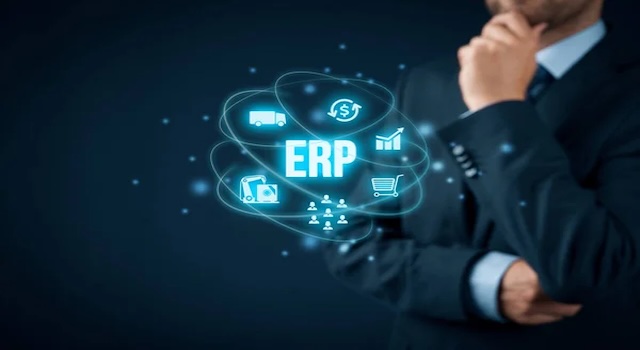ERP
Hybrid Cloud ERP: Balancing On-Premise and SaaS for Maximum Flexibility

Hybrid Cloud ERP is redefining enterprise IT strategy by blending the best of both worlds: the control and stability of on-premise systems with the flexibility and scalability of the cloud. For many global organizations, a hybrid ERP approach is the bridge between legacy infrastructure and next-generation innovation.
What is hybrid ERP?
Hybrid ERP refers to an architecture that integrates on-premise ERP modules with cloud-based components or extensions. For example, a company might maintain its core financials and production data on-prem while adopting cloud modules for analytics, HR, or CRM.
This “mix-and-match” approach gives enterprises the ability to innovate without abandoning critical systems that still work well.
Why enterprises choose hybrid ERP
- Regulatory and data control: Keep sensitive data on-premise while leveraging cloud for agility.
- Gradual modernization: Migrate to cloud ERP in stages instead of one disruptive overhaul.
- Resilience and redundancy: On-premise systems remain operational even during cloud outages.
- Cost optimization: Balance CAPEX (infrastructure) with OPEX (subscription-based services).
- Faster innovation: Add AI, analytics, or mobile features via cloud integrations without rewriting the core ERP.
Common hybrid ERP models
- Two-tier hybrid: Headquarters runs on a traditional ERP (like SAP ECC or Oracle E-Business Suite), while subsidiaries use a cloud ERP (like NetSuite or Dynamics 365).
- Extension-based hybrid: A legacy ERP is extended with cloud apps for analytics, e-commerce, or workforce management.
- Integration-first hybrid: A middleware platform or iPaaS (like Boomi or MuleSoft) connects multiple ERP systems into a unified data layer.
Technical architecture overview
- Core system layer: On-premise ERP responsible for transaction-heavy workloads and compliance-sensitive data.
- Cloud services layer: SaaS modules for analytics, planning, or collaboration.
- Integration layer: Middleware enabling real-time synchronization and unified reporting.
- Security and governance layer: Unified identity, encryption, and access policies across environments.
Integration challenges and solutions
- Data synchronization: Use APIs and message queues to maintain consistency between cloud and on-prem data.
- Latency and performance: Deploy edge caching or local processing for high-speed operations.
- Security alignment: Apply consistent encryption, authentication, and monitoring policies across systems.
- Version compatibility: Plan upgrades carefully to prevent mismatched integrations.
Leading hybrid ERP vendors
- SAP: Combines S/4HANA on-premise with SAP Business Technology Platform and cloud analytics.
- Oracle: Integrates Oracle Fusion Cloud apps with Oracle E-Business Suite environments.
- Microsoft: Uses Azure to bridge Dynamics 365 SaaS with legacy GP or AX deployments.
- Infor: Offers CloudSuite extensions for legacy Infor LN and M3 systems.
Key advantages of hybrid ERP
- Flexibility: Tailor deployment to specific business or regional needs.
- Business continuity: Reduce downtime risk through dual-environment redundancy.
- Innovation at scale: Add AI, RPA, or IoT modules without heavy infrastructure changes.
- Future-proofing: Move workloads to the cloud gradually as infrastructure depreciates.
Metrics for hybrid ERP success
- System uptime and reliability: Track combined availability across cloud and on-prem systems.
- Integration latency: Measure data sync speed between tiers.
- User satisfaction: Monitor adoption and performance feedback.
- Cost ratio (CAPEX to OPEX): Evaluate financial efficiency over time.
- Change agility: Measure time-to-implement for new features or modules.
Best practices for hybrid ERP implementation
- Step 1: Audit legacy systems to identify which modules are candidates for cloud migration.
- Step 2: Define integration and governance frameworks early in the project.
- Step 3: Use middleware or iPaaS for centralized monitoring and API management.
- Step 4: Pilot hybrid workflows (e.g., finance in the cloud, supply chain on-premise).
- Step 5: Roll out hybrid ERP company-wide with ongoing monitoring and support.
SEO-friendly FAQs
What is hybrid cloud ERP? A deployment model combining on-premise ERP systems with cloud-based applications for flexibility and scalability.
Why choose hybrid ERP? It allows businesses to modernize gradually, maintain control over critical data, and leverage cloud innovation.
Is hybrid ERP secure? Yes—with consistent identity management, encryption, and zero-trust policies across both environments.
Which industries benefit most? Manufacturing, healthcare, and finance—where data control and regulatory compliance are key.
Bottom line
Hybrid cloud ERP gives enterprises the best of both worlds—modern cloud innovation without sacrificing the reliability and control of on-prem systems. It’s a strategic bridge between today’s operations and tomorrow’s fully digital enterprise.






